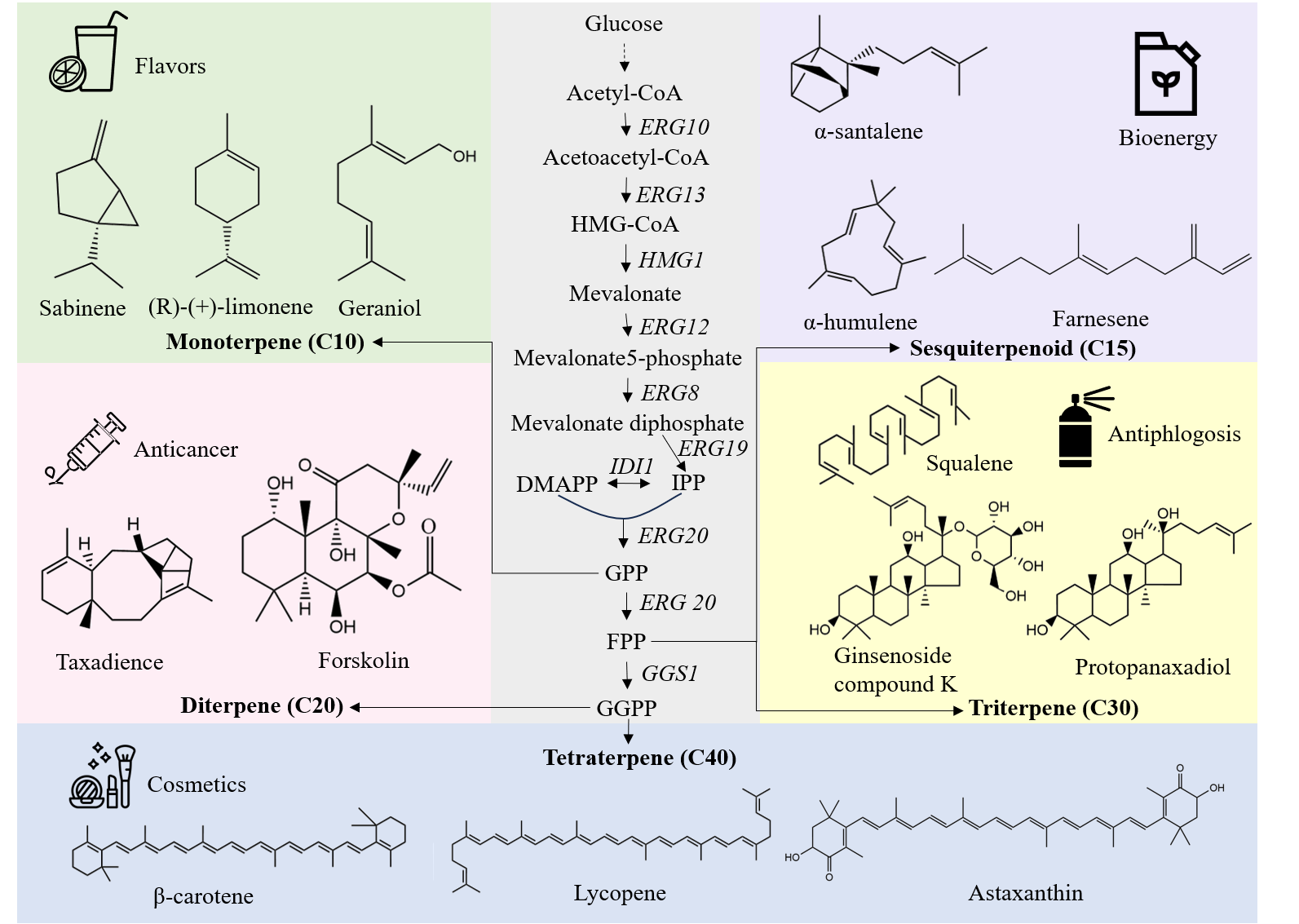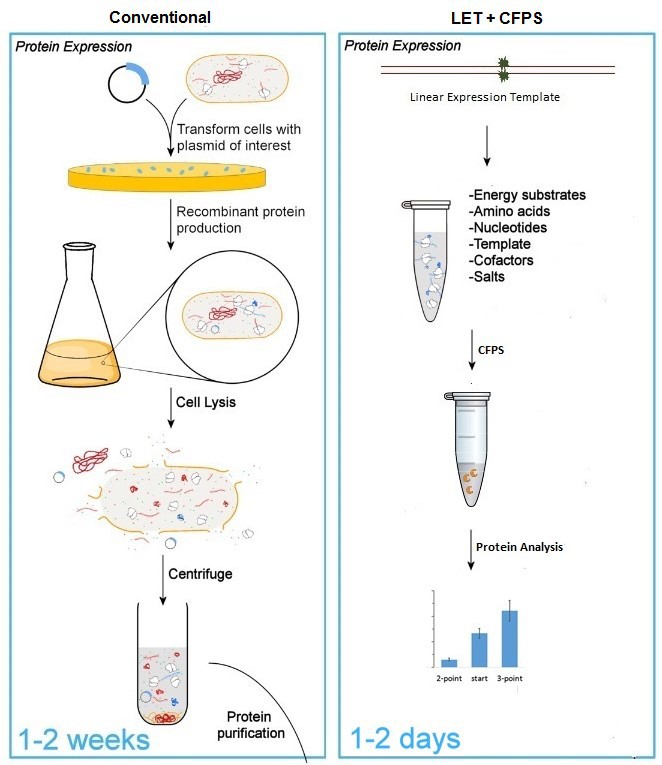Found 2 results
Review
13 February 2024Development and Perspective of Production of Terpenoids in Yeast
Terpenoids are a large class of secondary metabolites known for their remarkable diverse biological activities, making them widely utilized in the pharmaceutical, food, cosmetic, biofuel and agricultural fields. However, the current production of terpenoids heavily relies on plant extraction and chemical synthesis, which brings about concerns regarding infield, environmental and ecological issues. With the advancements in metabolic engineering and emerging synthetic biology tools, it is now possible to sustainably produce these high value-added terpenoids using microbial chassis. Among them, yeast has emerged as a promising candidate for the heterologous biosynthesis of terpenoids due to its inherent advantages, including robustness, safety, and the availability of sufficient precursor. This review focuses on the diverse strategies employed to enable terpenoids production in yeasts. These strategies encompass metabolic engineering approaches to optimize the mevalonate pathway, protein engineering techniques to improve terpenoid biosynthesis, the applications of organelles compartmentalization, high throughput screening and global approaches for the development of efficient cell factories. Furthermore, this review discusses the future prospects and challenges associated with yeast-based terpenoid production, while also emphasizing guidelines for future studies in this field.

Article
18 December 2023Time-efficient and Semi-automated Production and Screening of Proteins
Fast, flexible and non-randomized modification, production and screening of proteins in fully automated system are of high interest in biological research and applications. The conventional methods for protein engineering and screening, especially for mutations of multiple residues. are time consuming and often unreliable. We demonstrate here a new, fast and flexible protein production and screening method which combines linear expression template (LET) based cell free protein synthesis (CFPS) with specific screening methods. This approach is demonstrated using green fluorescence protein, phosphoserine aminotransferase (serC) and aspartokinase III (AKIII) as model systems. The results show that mutants with changes in different protein properties upon multiple point mutations can be produced and screened within 6 to 15 h. This method can be used further to generate mutants of enzymes and multi-enzyme complexes and be implemented within the workflow of a feedback-guided protein optimization and screening system.
